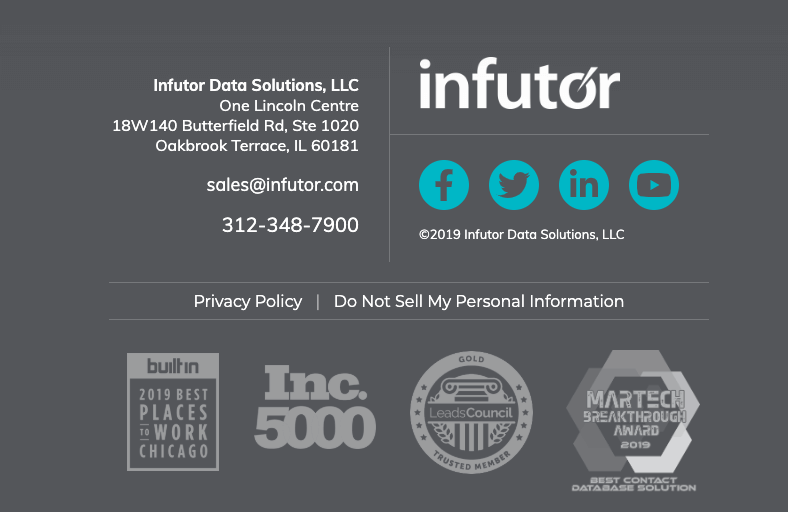Identity management company Infutor has launched a data opt-out portal to comply with the California Consumer Privacy Act (CCPA). It’s an approach that represents something of a model for the industry (albeit an imperfect one) and one the industry is unlikely to embrace (though it should).
Other data aggregators, such as Neustar and Acxiom, also offer opt-out portals. But the challenge with Infutor and these other sites is that consumers don’t know them and so don’t know to seek them out. If they do wind up on these sites, users must actively seek out the “Do Not Sell” (DNS) links. Many publishers have buried these links, so they’re far from “clear and conspicuous” as the statute requires.
Provided users locate the DNS links, there are a wide array of experiences to be found below the click. Refreshingly, the Infutor site provides a relatively straightforward form and no baffling legalese or fine print — unlike many other sites.
Two-step opt-out process. Infutor describes the full opt-out process as follows: “California consumers will be identified and will initially request a disclosure of their personal information by filling out the Opt Out Register form. If results are found, Infutor will email the disclosure report and the link to activate an Opt Out Community Site account. From there, California consumers can review their personal information, and determine if they want to proceed with the opt out (delete) process.” Alternatively, consumers can do some of this over the phone.
In other words, users submit their personal details to Infutor — some users might not complete the form, given that a social security number is a required field — which the company then uses to identify them in its database so they can opt-out. It would be easier if the opt-out were a one-step process. (There will need to be future clarification about what information the consumer is required to provide in order to opt-out.)
But once consumers opt-out, Infutor says they will be removed from the database within 45 days.
Form not buried or surrounded by fine print

The good and the bad. What’s praiseworthy about this approach is that it presents consumers with a single place to manage their opt-out across many third party sites/firms. The problem is that consumers don’t know Infutor’s partners, so they don’t know exactly where they’re opting-out.
Roughly three weeks in, most affected publishers offer an opt-out process on their individual sites. It’s burdensome and awkward for consumers to tackle opt-outs in this kind of piecemeal fashion. Heavy internet users visit hundreds of sites per week. Going through a multi-step opt-out process for each site is fatiguing, especially if you just want to read a single article.
Only the most dedicated privacy seekers, therefore, are going to do this time and again. Most mainstream users will simply ignore the process. Indeed that becomes more likely overtime — “accept” and move on.
As a consequence, CCPA may have only a limited practical impact on marketers, despite the widespread hand-wringing and resistance that preceded its January 1 implementation deadline. But marketers should not play hide-the-ball or create unreasonable friction for consumer opt-outs.
Why we care. The industry (IAB or DAA) could establish a single opt-out portal — a kind of clearinghouse — allowing consumers to globally opt-out of third-party data distribution. Individual publisher sites could also back onto this infrastructure, potentially making CCPA compliance easier.
A “global” opt-out mechanism for CCPA would be scary for marketers. But retailers, brands, and publishers need to sincerely embrace privacy and greater transparency because there’s no going back.
Firms that do so are more likely, over the long term, to build greater trust with customers and prospects and even see higher revenues. They could also make the case to consumers (in video, not text) that they might not want to opt-out. (When you opt-out of interest-based targeting/retargeting, it’s all Viagra, Christian Singles and Quicken Loan ads.)
Regardless of their posture toward CCPA, publishers and retailers are going to need to focus much more on first-party data going forward and working with companies that can help them enhance that data. Overall, marketers simply must tell a stronger and more convincing story to customers about personalization and its benefits to obtain and retain their data.

